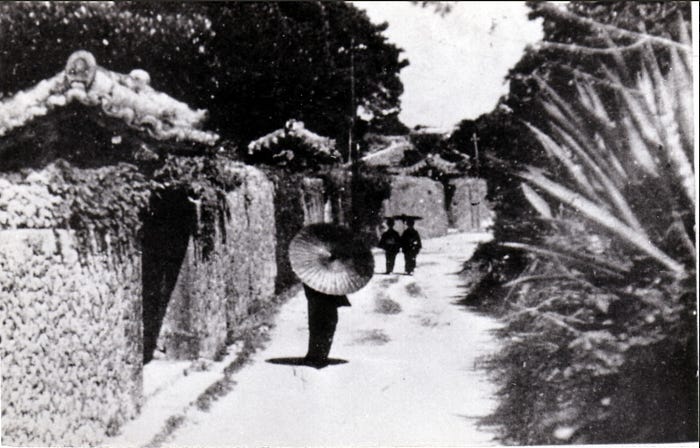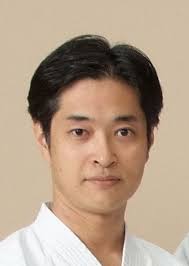Motobu Udundi is a martial art of the udun class. Udun means palace, but it also means royalty. Motobu Udundi uses a wide range of weapons, including sword, spear, naginata (halberd), sai, nūchiku (nunchaku), tonfa, etc. So what was the martial art of the tunchi, a class below the udun? Tunchi is a class of people called nobles or senior samurai (samurē in the Okinawna dialect). For example, of the martial arts of Asato Ankō, who belonged to the rank of tunchi, his disciple Funakoshi Gichin wrote the following:
My teacher’s martial arts.
To have a complete set of equipment for martial arts practice was not something that the average martial artist would attempt. Of course, his status was high and his wealth was plentiful, so there was nothing he couldn’t get.For example, a standing makiwara was set up everywhere, namely in each room. The same was true of the hung makiwara. There were also equipment for hitting with staffs, kakiyā, chīshī, sāshi, gripping balls, six-shaku staffs, wooden swords, stones for inserting naginata (halberd), tenbē, nunchaku, jitte (sai), wooden horses, a bowing range, horseback riding, etc., so that Asato Sensei could practice and train whenever and wherever he wished. (Note)
According to the above, in addition to various types of training tools, Asato’s residence had weapons such as staffs, wooden swords, naginata, tembē, nunchaku, sai, and bows, as well as training tools and places for them. In other words, even in the rank of tunchi, such a wide range of weapons were practiced.
According to Funakoshi Sensei, Asato also learned Jigen-ryū swordsmanship from Ijūin and said, “If it’s a real sword fight, no matter when or who offers me a fight, I will fight.” This suggests that he not only practiced tachigi-uchi (hitting standing wood) alone, but also in pairs and practice matches.

Since the udun and tunchi were less than 1% of the total Ryukyu samurai population, the entire martial arts of these classes is not well understood. They were never only practicing karate. At the same time, they were also practicing various weapon arts.

If all the weapons arts of Asato Ankō had been passed down to the present day, there might have been a comprehensive martial art that could be called “Asato Dunchidī” (the martial arts of Lord Asato).
Note: Funakoshi Gichin , “Anecdotes about my teacher, Asato Sensei,” Ken, №8, Keio University Sports Organization Karate Club, 1934.
The original Japanese article was posted on May 1, 2020 on Ameblo, and the English translation was posted on May 3, 2020.
Written by:

Thank you for reading my story. If you would like, please follow me.
Shihan, Motobu Kenpō 7th dan, Motobu Udundī 7th dan. Discusses the history of karate and martial arts, and introduces Japanese culture and history.
